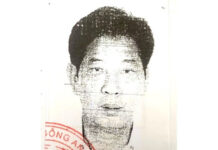
The demand for elderly care homes is on the rise. (Int)
According to the United Nations Population Fund (UNFPA), Vietnam is among the top 10 countries with the fastest aging population in the world. Individuals aged 60 and above accounted for 11.9% of the total population in 2019, and this figure is projected to increase to over 25% by 2050. By 2036, Vietnam will enter a period of population aging, transitioning from an “aging” to an “aged” society.
The decline in birth rates over the past decades has significantly impacted Vietnam’s population structure, accelerating the aging process. Fertility rates have halved in over 30 years, dropping from 3.8 children per woman in 1989 to below 2 children in 2023. On average, while the total population grew by 1.14% annually between 2009 and 2019, the elderly population grew at a much faster rate of 4.35% per year.
The Urgent Need for Elderly Care Homes
This reality poses challenges across all socio-economic aspects, including a shortage of young workforce, decreased labor force and productivity, and more. One of the most pressing challenges is the need to strengthen the development of elderly care models to meet the growing demand for treatment, healthcare, and improved quality of life for the elderly.
Currently, the proportion of elderly people living alone is increasing over time, rising from 9.68% in 2009 to 13.74% in 2019. The number of elderly individuals facing difficulties in daily activities and dealing with disabilities related to vision, hearing, mobility, memory, concentration, and communication has also increased significantly.
With economic development and modernizing lifestyles, societal perceptions about elderly care homes are also evolving, becoming more positive. The demand for elderly care homes is continuously growing, both in terms of quantity and quality.
A survey conducted by UNFPA and the General Statistics Office of Vietnam revealed that approximately 36% of elderly individuals and their families are willing to pay for elderly care services. The preference for care facilities, including day-care and residential options, is expected to increase in the future, along with a demand for home-based, community-based, and institutional care services, especially among elderly individuals with higher incomes.
In Vietnam, the number of care facilities providing services for the elderly, particularly private institutions, remains limited compared to the potential demand. According to a survey by Bao Viet Insurance Company (BVI), only 32 out of 63 provinces in Vietnam have elderly care homes, while the rate of elderly people living alone continues to rise. Currently, there are just over 400 elderly care homes in the country, with approximately 50% being charitable or state-invested centers.
Real Estate Giants Seize the Market Opportunity
In March 2024, Vingroup officially signed a cooperation agreement with Well Group (Japan) to develop international-standard elderly care centers offering two types of services: day-care and long-term residential care. This includes a premium elderly care model at Vinhomes Ocean Park 2 (Ocean City, Hanoi).
Alongside exploring the long-term elderly care model, Vingroup is also planning to expand and replicate this model across its chain, adding premium elderly care homes to the list of “exclusive privileges of living in Vinhomes.”
Earlier in August, Sun Group launched the Sun Urban City project in Ha Nam province, a large-scale urban area with 1,001 amenities. This project caters to the comprehensive healthcare needs of the elderly, featuring an elderly care center, specialized hospitals, and ample space for walking and socializing with peers and family.
However, these facilities currently only serve a small proportion of the elderly population in urban areas. The cost of living and care services in private elderly care homes remains high compared to the average income in Vietnam, especially for the elderly.
Therefore, in addition to economic growth strategies, it is crucial to implement measures such as increasing labor income, encouraging elderly individuals to engage in economic activities, and expanding the scope of health and social insurance to subsidize elderly care home expenses, thereby reducing financial burdens and improving accessibility.
Encouraging Policies for Business Involvement
To ensure sufficient quantity and quality of care for the elderly, the state needs to implement policies that encourage businesses to participate in elderly care. Specifically:
First, consider tax exemption or reduction policies for businesses developing elderly care homes in the initial years of operation to reduce financial costs and risks for investors in this field.
Second, elderly care homes classified as “Special Housing” deserve special attention. Similar to social housing, the government should provide low-interest or interest-free loans to private companies interested in constructing and operating elderly care facilities. Establish a government fund to offer grants or credit guarantees for elderly care home development projects.
Third, attract foreign investors to the elderly care sector in Vietnam through preferential policies on land lease, taxes, fees, and administrative procedure reforms.
Fourth, allocate or lease land at preferential rates for extended periods to businesses developing elderly care homes, especially in high-demand areas. Reduce or waive fees related to land use conversion for elderly care home construction projects.
Fifth, establish clear and transparent legal regulations regarding the standards and operating conditions of elderly care homes.
Finally, promote public-private partnership (PPP) models by expanding investment fields in elderly care, creating a legal basis for attracting private sector investment in this sector, and leveraging the resources of both the government and private entities in infrastructure development and service provision for elderly care homes. Allow private enterprises to operate existing public elderly care facilities.






































